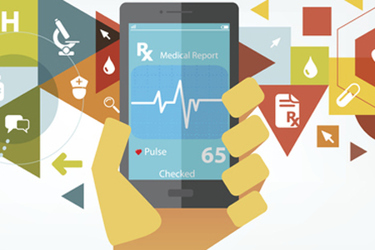Putting Patients First: Human-Centric Approaches In Digital Healthcare
By Amy West, head of U.S. digital transformation & innovation at Novo Nordisk

Integrating digital technology into patient care represents one of the most transformative shifts in healthcare. This digital health revolution is redefining our approach to clinical trials, patient engagement, and overall healthcare management. As the head of U.S. digital transformation and innovation at Novo Nordisk, I've witnessed both the promises and challenges that this digital revolution brings.
The lightning pace at which technology accelerates our ability to innovate novel and disruptive healthcare solutions is astonishing. However, we must not become so overly invested in the technology that we lose track of who we're ultimately solving challenges for — the patient. Human-centric design should be the starting point for identifying the core issues that drive innovation, experimentation, and finding solutions to unlock the full potential of digital health.
What Needs To Change
There are many areas of opportunity for change, but here are a few that should be prioritized:
Bridging The Gap Between Controlled Trials And Real-World Results
Clinical trials are meticulously controlled environments designed to gather specific data under stringent conditions to prove safety and efficacy. However, these results often fall short of capturing the complexities of real-world scenarios. For instance, in therapeutic areas like obesity, the protocol often requires capturing behavioral and emotional information. Current tools used to evaluate changes in eating behavior in clinical trials can be subjective (e.g., questionnaires, food diaries, and mood scales), relying on self-reporting of what and how much is eaten and how one feels at that time. While unreliable and inaccurate, these are currently considered the gold standard due to a lack of better options. In light of this, clinical trials often don't reflect the real world of drug delivery and management since the everyday reality of how patients really feel, function, engage, and access the therapeutic is missing. This is where technology and digital innovation can step in to enable the real-time collection of real-world data. This can be achieved by seamlessly integrating sensors, wearables, video, and/or voice technologies as essential components of the trial prerequisites, effectively reducing subjectivity in the process.
Incorporating The Voice Of The Patient In Clinical Trial Development And Implementation
The conventional validation process for clinical trials often lacks a connection to the daily lives and true priorities of the participants. This can result in difficult recruitment, delays, and high dropout rates that can compromise the overall trial. It also can run the risk of ultimately validating a solution that has no practical value for end-user patients. This disconnect is a byproduct of the long-standing scientific "inside-out" approach deeply ingrained in our sector. In an effort to determine and validate safety and efficacy outcomes in compliance with FDA standards and regulations, the process and scientific requirements take precedence over the patient experience.
In September, I delivered the keynote fireside chat at the Mobile Tech in Clinical Trials Conference in Boston. My focus highlighted the importance of incorporating the patient experience and voice in clinical trial design and implementation. My points were reinforced when Ella Belasa, the event co-chair and patient advocate, discussed her journey living with cystic fibrosis and her experiences as a participant in clinical trials. She shared that she resided in Virginia but endured a grueling eight-hour round-trip drive to and from Duke University each week to participate in a clinical trial. While she managed to make the journey in good weeks, severe symptoms could have prevented travel, leading to disruptions in the trial's data collection. If she had access to a hybrid localized site model, both her well-being as a patient and the timeliness and consistency of the collected data would have been greatly enhanced. Fortunately, hybrid and decentralized trial models are gaining traction, significantly reducing the burden on the participants by facilitating treatment and data collection in ways that are more convenient for them, including even from the comfort of their homes.
Diversity In Clinical Trials
Recruiting patients for clinical trials presents a dual challenge: identifying suitable candidates and ensuring inclusive participant pools. The challenge becomes even more pronounced when seeking individuals with rare diseases. Geographical location and socioeconomic status complicate an already difficult search. Including greater diversity in clinical trials will be a key component of overcoming the healthcare inequities pervading our healthcare ecosystem. This is another area where digital and data innovations emerge as crucial tools to overcome these challenges, enabling diverse patient recruitment and enhanced care. Data-driven solutions provide a means to conduct more accurate outreach effectively. Smart, predictive models can pinpoint the ideal geographies and communities for patient recruitment. Outreach efforts can be conducted through digital platforms, as well as through local low-tech, highly credible, and trusted channels, such as advocacy groups and churches. This approach is especially pertinent in the context of rare diseases, where tight-knit advocacy groups often possess a wealth of valuable expertise that places the patient as the expert. Furthermore, it's important to remember that not everyone has access to technology, but, ironically, technology can assist us in identifying strategies to connect with these populations through conventional means. Despite the progress being made, these innovative models have yet to become commonplace.
What's Working
Understanding The Patient As A Person
Fortunately, we are now witnessing a transformative shift, albeit a gradual one, to create a more patient-centric trial design and implementation. In my position at Novo Nordisk, I serve as the leader of our U.S. Digital Transformation & Innovation incubator. Our team collaborates with select R&D units to infuse the patient experience into the planning and execution of some early-phase clinical trials. We delve beyond the typical considerations of drug access and cost to explore how everyday life and social determinants of health (SDoH) influences impact an individual's ability to engage in their health and well-being. By also bringing the early-stage, high science teams together with the late-stage commercial, customer-facing teams, we believe we can enable a more efficient, effective, and agile overall value chain. The collaborative spirit is thriving, fostering awareness, empathy, and profound insights — factors that ultimately drive innovation and our business.
Fostering Collaboration Between Patients And Scientists
Patient engagement in clinical research has been observed to enhance research in various ways, including increased study relevance, improved trial recruitment, and retention. Increased focus on these necessary partnerships between patients and scientists is dismantling siloed research and development barriers, cultivating a genuine interest in holistic patient well-being and a more humanitarian approach to healthcare. Digital transformation provides an opportunity to bolster this collaboration and connectivity. As the healthcare industry transitions toward an "outside-in" approach, prioritizing patient pain points, engagement, and empowerment, we see the potential for a fundamental change in the way we care for patients and address their medical needs.
Incorporating the patient voice into the design and protocol of clinical trials is a promising step forward. However, understanding how drugs impact not just a patient's physiology but also their everyday life is critical. From a pharmaceutical standpoint, we've historically built life-saving solutions based on science and molecules. It's imperative to involve customer insights, experiences, preferences, and needs earlier in the process, integrating them into the value chain alongside scientific expertise. No one wants to be seen as a "patient." We are all individual human beings, each unique, not cohorts or populations. While we seek to standardize and scale therapies, we must respect the individuality of humanity.
To move healthcare forward, it's essential to anchor this human-centric perspective firmly and prioritize it throughout the healthcare value chain, including the early-stage discovery, trials, and experimentation through to market solutions. While technology and data offer incredible potential, it's crucial not to overlook the human component. The key lies in harmonizing science and technology with the human experience, creating a balance that can revolutionize the healthcare landscape.
About The Author:
 Amy West is a senior healthcare executive whose work focuses on disrupting markets by championing digital health and commercial innovation strategies that drive positive patient experiences and outcomes. She is currently the Head of US Digital Transformation and Innovation for Novo Nordisk, where she established the first US innovation incubator (Apis Labs) for Novo Nordisk, applying design thinking, scrum, agile, and lean methodologies to identify and test novel solutions. She leads a team of industry pioneers in exploring existing and emerging technologies and other areas of innovation to develop novel solutions for improved patient experience and outcomes. During her tenure at Novo Nordisk, Amy has been a consistent and respected agent of change with broadening scope and responsibilities to champion and infuse the value of customer centricity and innovation. Amy holds an MBA from Marymount University and a bachelor’s degree in English from the University of Richmond.
Amy West is a senior healthcare executive whose work focuses on disrupting markets by championing digital health and commercial innovation strategies that drive positive patient experiences and outcomes. She is currently the Head of US Digital Transformation and Innovation for Novo Nordisk, where she established the first US innovation incubator (Apis Labs) for Novo Nordisk, applying design thinking, scrum, agile, and lean methodologies to identify and test novel solutions. She leads a team of industry pioneers in exploring existing and emerging technologies and other areas of innovation to develop novel solutions for improved patient experience and outcomes. During her tenure at Novo Nordisk, Amy has been a consistent and respected agent of change with broadening scope and responsibilities to champion and infuse the value of customer centricity and innovation. Amy holds an MBA from Marymount University and a bachelor’s degree in English from the University of Richmond.
